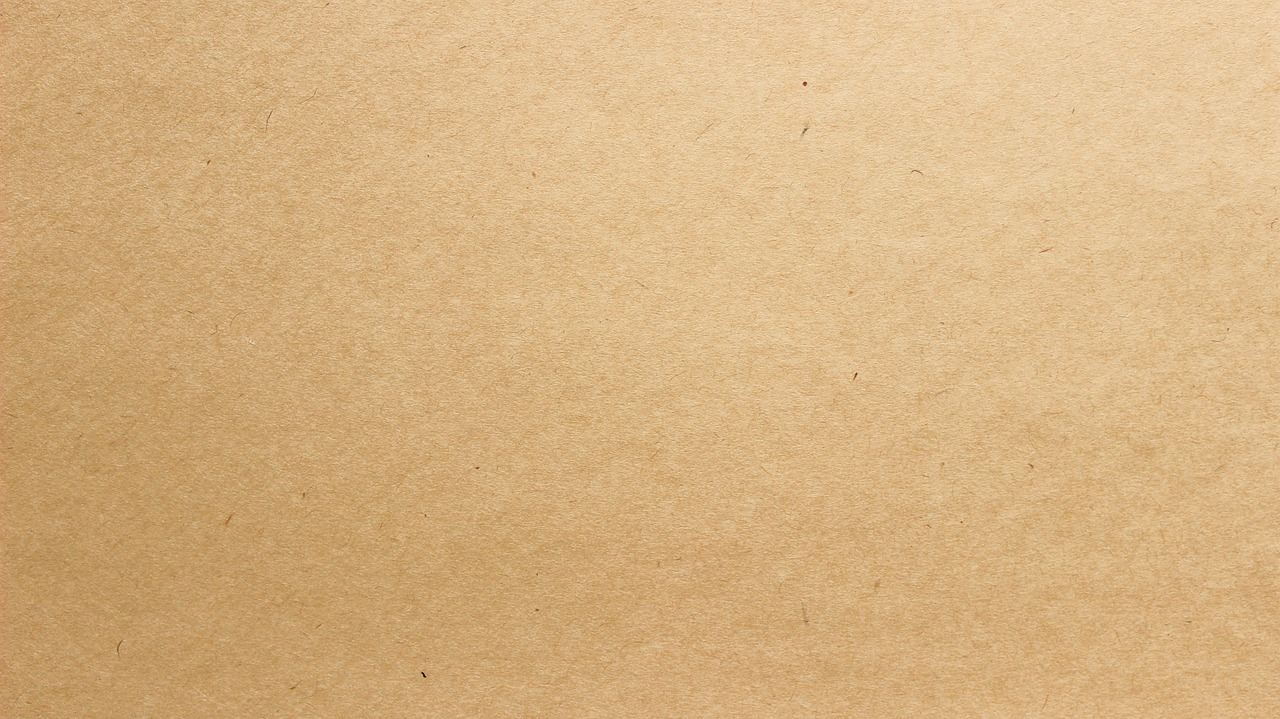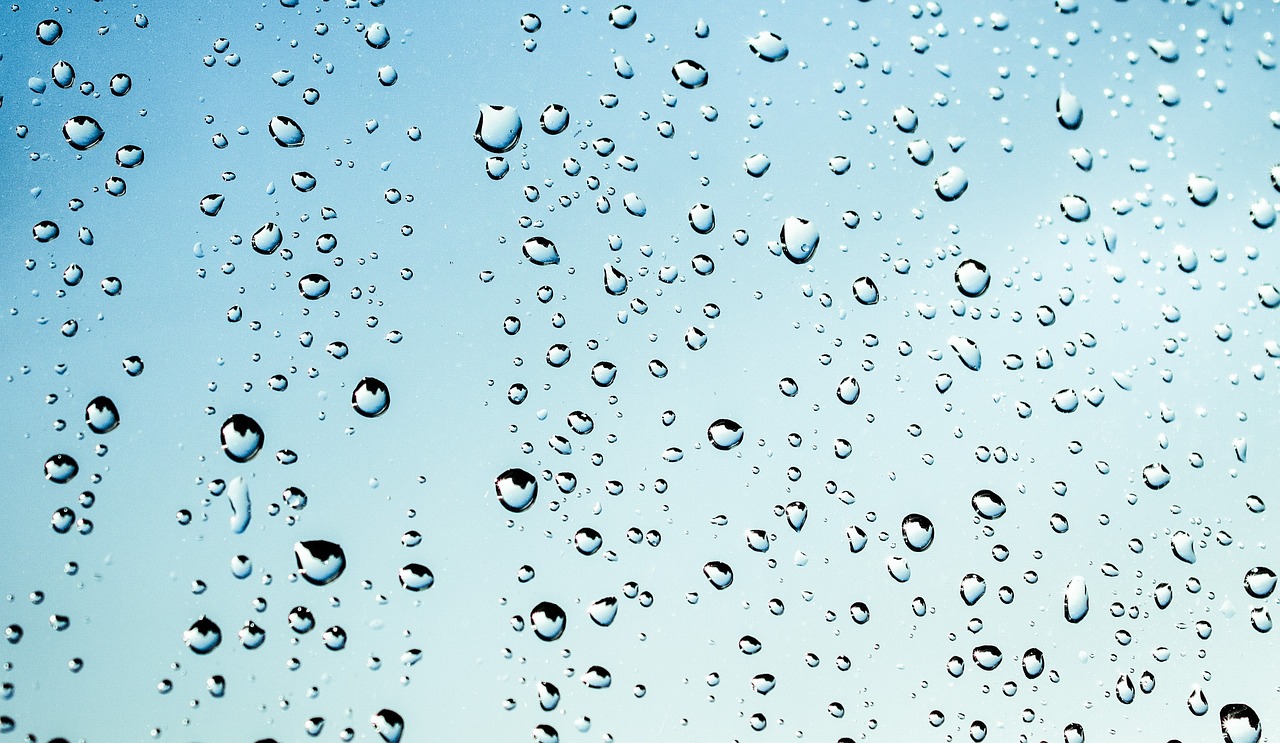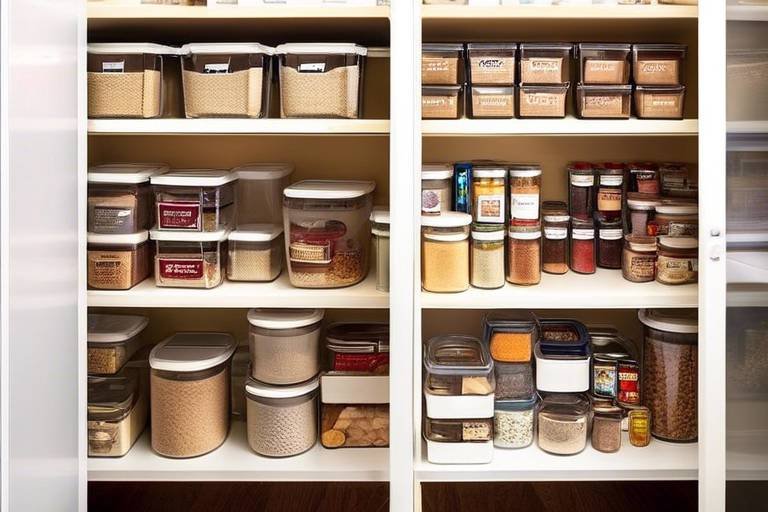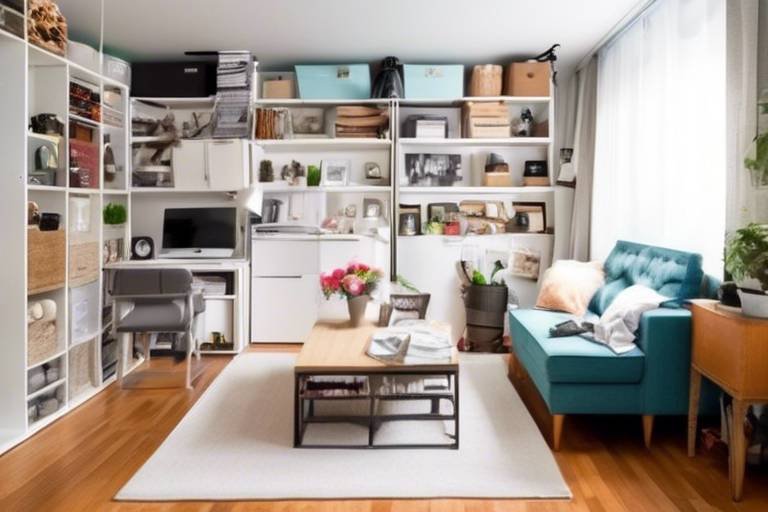How to Remove Old Wallpaper and Prep Walls for New Paint
This article will guide you through the process of removing old wallpaper and preparing your walls for a fresh coat of paint. Whether you're looking to update your space or simply refresh the walls, these steps will help you achieve a professional finish for your renovation project.
First and foremost, gather all the necessary tools and materials to ensure a smooth and efficient process. You will need a wallpaper steamer, scraper, sponge, protective gear such as gloves and goggles, wallpaper remover solution, sandpaper, and primer for wall preparation.
Before diving into the project, it's important to protect the room and yourself. Cover the floors and furniture with drop cloths to prevent any paint or debris from damaging your belongings. Additionally, ensure proper ventilation in the room and wear protective gear to shield yourself from any potential hazards.
When it comes to removing the old wallpaper, start by scoring the wallpaper to allow the remover solution to penetrate. Apply the solution as directed and use a scraper to peel off the old wallpaper carefully. Take your time and work methodically to avoid damaging the wall surface underneath.
Once the wallpaper is removed, it's time to clean and repair the walls. Use a sponge and warm, soapy water to clean off any residue left behind. Repair any imperfections on the walls, such as holes or cracks, using spackling compound. Sand the walls to achieve a smooth finish before proceeding to the next step.
To ensure a uniform surface for painting, lightly sand the walls with fine-grit sandpaper. Focus on rough areas and seams to create a seamless finish. This step is crucial to ensure proper paint adhesion and a flawless final result.
Next, apply a coat of primer to the walls. Priming the walls will seal the surface, cover imperfections, enhance paint adhesion, and ultimately improve the overall finish of the walls. Choose a high-quality primer for the best results.
Now comes the fun part - choosing and applying the paint. Select a paint color and finish that suits your style and space. Use a paint roller for large areas and a brush for edges and corners. Apply multiple coats as needed for full coverage and a professional look.
Once the paint has dried, inspect the walls for any touch-ups that may be needed. Make sure to address any missed spots or uneven coverage for a polished final result. Once you're satisfied with the outcome, remove any protective coverings, clean up the workspace, and admire your newly refreshed walls ready for decoration.

Gather Necessary Tools and Materials
When embarking on the journey of removing old wallpaper and prepping walls for a fresh coat of paint, it is crucial to gather the necessary tools and materials to ensure a smooth and successful renovation project. To kickstart this exciting endeavor, you'll need to arm yourself with essential items that will make the process more manageable and efficient.
First and foremost, equip yourself with a reliable wallpaper steamer, a trusty scraper, a durable sponge, and don't forget to prioritize your safety by wearing protective gear such as gloves and goggles. These tools will be your companions throughout the wallpaper removal and wall preparation stages, helping you achieve a professional finish.
Additionally, stock up on essential materials like a high-quality wallpaper remover solution to facilitate the removal process, sandpaper for smoothing out imperfections, and primer to prepare the walls for the new paint. These materials play a vital role in ensuring that your walls are prepped and primed for a fresh and vibrant transformation.
Before diving into the project, take a moment to gather all the necessary tools and materials, creating a dedicated workspace where you can unleash your creativity and revamp your living space. With the right equipment at your disposal, you'll be well-prepared to tackle the challenges of removing old wallpaper and prepping your walls for a stunning paint makeover.

Protect the Room and Yourself
When embarking on the task of removing old wallpaper and prepping walls for new paint, it is essential to protect both the room and yourself throughout the process. Before diving into the renovation project, take the necessary precautions to safeguard your surroundings and well-being.
Covering the floors and furniture with durable drop cloths is the first step in protecting the room from potential damage or splatters. By creating a barrier between the work area and the rest of the space, you can prevent paint and debris from causing unwanted mess and stains.
Proper ventilation is crucial during any painting or renovation project to ensure the circulation of fresh air and the dissipation of fumes. Open windows and use fans to maintain a breathable environment while working on prepping the walls for a fresh coat of paint.
Donning protective gear such as gloves and goggles is a must when dealing with chemicals, dust, and sharp tools. Shielding your hands and eyes from potential hazards will not only keep you safe but also make the process more comfortable and secure.
Remember, a successful renovation project not only involves skillful execution but also prioritizes safety and cleanliness. By taking the necessary precautions to protect the room and yourself, you can ensure a smooth and secure painting process from start to finish.

Remove Old Wallpaper
Removing old wallpaper can be a challenging yet rewarding task when preparing your walls for a fresh coat of paint. The first step in this process is to score the wallpaper to allow the remover solution to penetrate effectively. Once the solution has had time to work its magic, use a scraper to carefully peel off the old wallpaper. It's crucial to approach this step methodically and patiently to avoid causing any damage to the wall surface underneath.
After successfully removing the old wallpaper, the next important step is to clean the walls thoroughly. Use a sponge and warm, soapy water to eliminate any residue left behind. This cleaning process is essential to ensure a smooth and clean surface for the new paint to adhere to. Additionally, take this opportunity to inspect the walls for any imperfections such as holes or cracks that may need to be addressed before painting.
Once the walls are clean and any necessary repairs have been made, it's time to focus on smoothing and sanding the walls. Lightly sand the walls with fine-grit sandpaper to create a uniform surface that will promote proper paint adhesion. Pay special attention to rough areas and seams to ensure a flawless finish once the painting is complete.
After sanding, the next step is to prime the walls. Applying a coat of primer is crucial as it seals the surface, covers imperfections, and enhances the adhesion of the paint. A good primer will provide a solid base for the paint to ensure a professional-looking finish.
With the walls primed and ready, it's time to choose the perfect paint for your space. Select a high-quality paint in the desired color and finish, ensuring it complements your overall design vision. Use a paint roller for larger wall areas and a brush for edges and corners, applying multiple coats as needed for full coverage and a polished look.
Once the paint has dried, it's essential to inspect the walls for any touch-ups that may be required. Check for missed spots or uneven coverage and make any necessary corrections. Finally, remove any protective coverings, clean up your workspace, and step back to admire your beautifully refreshed walls, ready to showcase your personal style and décor.

Clean and Repair Walls
When it comes to renovating a room, one of the essential steps is to clean and repair the walls properly. After removing the old wallpaper, it's crucial to ensure that the walls are in good condition before applying a fresh coat of paint. This process not only enhances the overall appearance of the room but also ensures a smooth and flawless finish that will last for years to come.
Once the wallpaper is removed, the walls may have residue or imperfections that need attention. To start, use a sponge and warm, soapy water to clean the walls thoroughly. This step helps to eliminate any remaining wallpaper adhesive or dirt, providing a clean surface for further repairs.
After cleaning, inspect the walls for any holes, cracks, or other imperfections. These issues can be easily fixed with spackling compound, which fills in gaps and creates a smooth surface. Apply the compound to the damaged areas, then use sandpaper to sand down the excess for a seamless finish.
When repairing walls, it's essential to take your time and ensure that each imperfection is properly addressed. By meticulously cleaning and repairing the walls, you set the foundation for a successful painting project that will result in a professional and polished look.

Smooth and Sand Walls
When it comes to achieving a flawless paint finish, one crucial step in the process is to smooth and sand the walls properly. This step ensures that the surface is even, free of imperfections, and ready to absorb the new paint for a professional-looking result.
Before you start sanding, it's essential to inspect the walls for any rough areas, bumps, or seams that may need extra attention. These areas can prevent the paint from adhering correctly, leading to an uneven finish.
Using fine-grit sandpaper, gently sand the walls in a circular motion, focusing on the problematic areas identified during the inspection. Be careful not to oversand, as this can damage the wall surface and create more work for yourself.
After sanding, wipe down the walls with a clean cloth to remove any dust and debris. This step is crucial to ensure a smooth and clean surface for painting. Inspect the walls again to make sure they are now uniform and ready for priming.
Remember, the key to a professional paint job lies in the preparation. Taking the time to smooth and sand the walls properly will ultimately result in a beautiful finish that enhances the overall look of your space.

Prime the Walls
When it comes to painting walls, priming is a crucial step that often gets overlooked. Applying a coat of primer before painting not only helps the paint adhere better but also ensures a more professional and long-lasting finish. Primer acts as a sealant, covering any imperfections on the wall surface and creating a smooth base for the paint to go on top. Think of it as the foundation of a building – without a solid base, the structure won't hold up well over time.
Before priming, make sure the walls are clean and dry. Use a high-quality primer that is suitable for the type of paint you will be using. Water-based primers are versatile and easy to clean up, while oil-based primers are known for their durability and adhesion. Consider the condition of your walls and the paint color you've chosen when selecting the right primer for the job.
Apply the primer evenly using a roller or brush, covering the entire wall surface with a thin, uniform coat. Allow the primer to dry completely before applying the paint. Depending on the type of primer used, drying times may vary, so be sure to follow the manufacturer's instructions for the best results.
Priming not only enhances the appearance of the final paint job but also helps in reducing the number of paint coats needed for full coverage. It seals the wall, prevents stains from bleeding through, and promotes better adhesion, especially on porous surfaces. Investing time in priming your walls will pay off in the long run, ensuring a professional-looking finish that lasts for years to come.

Choose and Apply Paint
When it comes to choosing and applying paint for your walls, it's essential to consider the quality, color, and finish that will best suit your space. Selecting a high-quality paint is crucial for achieving a professional and long-lasting result. Look for paints that offer good coverage, durability, and easy application.
Before starting the painting process, decide on the color and finish that will complement your décor and personal style. Whether you prefer a matte, satin, or glossy finish, make sure it aligns with the overall aesthetic you want to achieve in the room. Remember, the color you choose can significantly impact the atmosphere and mood of the space.
Once you have chosen the perfect paint, it's time to apply it to your walls. Start by using a paint roller for larger areas to ensure even coverage and a smooth finish. Use a brush for edges, corners, and intricate details to achieve precision and neatness.
Apply the paint in thin, even coats, allowing each layer to dry completely before adding the next. This will help prevent drips, streaks, and uneven patches, resulting in a flawless finish. If necessary, apply multiple coats to achieve the desired color depth and coverage.
After painting, allow the walls to dry thoroughly before assessing the final result. Take the time to inspect the walls for any touch-ups needed, such as missed spots or areas with uneven coverage. Once you are satisfied with the outcome, remove any protective coverings and clean up your workspace to reveal your freshly painted walls ready for decoration.

Finish with Touch-Ups and Clean Up
After completing the painting process, it's time to give your walls a final once-over to ensure they are flawless and ready to showcase your new paint. Start by inspecting the painted walls under good lighting, looking for any missed spots, uneven coverage, or imperfections that may need touching up.
Grab your paintbrush and the leftover paint to address any areas that require a bit more color. Feather out the touch-ups smoothly to blend them seamlessly with the rest of the wall, ensuring a consistent finish throughout the room.
Once you are satisfied with the paint application, it's time to remove any protective coverings you placed to shield floors, furniture, or trim during the painting process. Carefully peel back drop cloths and painter's tape, taking care not to damage the freshly painted walls.
As you wrap up your project, take a moment to clean up your workspace. Dispose of any used materials, such as paint cans, brushes, and drop cloths, properly. Wipe down any surfaces that may have gathered dust or debris during the renovation process, leaving your room looking clean and refreshed.
With the finishing touches complete and your workspace tidied up, step back and admire the transformation you have achieved. Your walls are now primed and painted to perfection, ready to serve as a stunning backdrop for your decor and personal style.
Frequently Asked Questions
- What tools do I need to remove old wallpaper?
To remove old wallpaper, you will need tools such as a wallpaper steamer, scraper, sponge, and protective gear. These tools will help you effectively strip off the old wallpaper without damaging the walls underneath.
- How do I prepare walls for new paint after removing wallpaper?
After removing the old wallpaper, it is essential to clean and repair the walls. This involves cleaning the walls with warm, soapy water, repairing any imperfections with spackling compound, sanding the walls for a smooth finish, priming the walls, and finally applying the new paint for a fresh look.
- What are the benefits of priming walls before painting?
Priming the walls before painting is crucial as it helps seal the surface, cover imperfections, enhance paint adhesion, and improve the overall finish of the walls. It provides a smooth base for the paint to adhere to, ensuring a professional and long-lasting result.
- How many coats of paint should I apply for full coverage?
The number of coats of paint needed for full coverage depends on the quality of the paint and the color being used. In most cases, applying two coats of paint is sufficient to achieve a uniform and professional finish. However, darker colors or lower-quality paints may require additional coats for complete coverage.



















